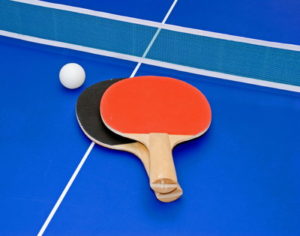 Sometimes called ping-pong, table tennis is, as the name suggests, a game that is played on a table. It is a sport for either singles or doubles teams, but the nature of the size of the playing area means that it’s impossible for it to be played with any more players than that if it’s being done professionally. Governed by the International Table Tennis Federation, the sport was made an Olympic sport in 1988 for both male and female competitors.
Sometimes called ping-pong, table tennis is, as the name suggests, a game that is played on a table. It is a sport for either singles or doubles teams, but the nature of the size of the playing area means that it’s impossible for it to be played with any more players than that if it’s being done professionally. Governed by the International Table Tennis Federation, the sport was made an Olympic sport in 1988 for both male and female competitors.
The Olympics were actually someway behind the Paralympics in making table tennis an official sport, with the latter having done so in 1960 at the inaugural Summer Paralympics. That gives you an idea of how inclusive it is as a sport, with players of all abilities able to get involved in the game to some extent. The sport originated during the Victorian era in England, but it was developed in India by British army officers serving there in the mid-19th century.
Best Table Tennis Betting Site
Bet365

There is frankly no beating Bet365 when it comes to markets for table tennis, they really do cover every major event on the calendar.
Along with a big choice of lines to bet on, including; correct score, totals, odd/even, over/under, winning margins and individual game betting, you can also stream matches (with a funded account or bet in the previous 24 hours).
In-Play they are unbeatable too with more options than the other bookies where you can bet on individual points. If you are looking around to compare prices you will generally find 365 are the best but also consider looking at other big bookmakers.
Betting On Table Tennis
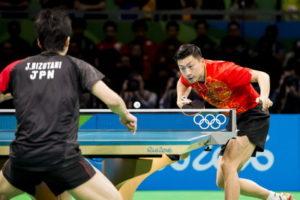 The very nature of the obscure sports covered on this site means that not all bookmakers will offer decent markets on them because they’re less commonly bet on than more mainstream alternatives. You will be able to find some bookies that will offer markets in a more specialist manner, but generally speaking you’ll be likely to see the same sort of markets from all of the big players in the UK.
The very nature of the obscure sports covered on this site means that not all bookmakers will offer decent markets on them because they’re less commonly bet on than more mainstream alternatives. You will be able to find some bookies that will offer markets in a more specialist manner, but generally speaking you’ll be likely to see the same sort of markets from all of the big players in the UK.
The main market will be ante-post bets on tournaments, wherein you’ll want to select the player that you think is going to end up as the winner.
Other markets include head-to-head betting, which is a bet on whether you think one player will do better than another in a table tennis competition, even if neither of them goes on to win it.
Individual matches is another good place to look for value in table tennis betting, ignoring the overall competition market in order to see if you can win some money on each match taking place within the tournament.
The History Of Table Tennis
Indoor Version Of Lawn Tennis
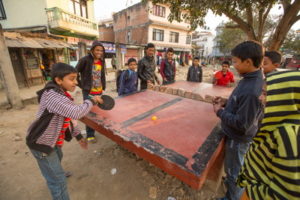 The origins of table tennis as a sport are rather more unexciting that you might find with other sports. Look at rugby, for example, and you’ll discover a sport that was created when disagreements arose of the rules of football and players wanted a more rigorous game to keep them fit.
The origins of table tennis as a sport are rather more unexciting that you might find with other sports. Look at rugby, for example, and you’ll discover a sport that was created when disagreements arose of the rules of football and players wanted a more rigorous game to keep them fit.
To look at the origins we need to explore the parlours of Victorian England, where anyone with a table, a ball and some paddles could engage in a game. It was seen as little more than a mild diversion during its more formative years, having been created as a gentle, indoor version of Lawn Tennis that had sprung up during the 1800s.
Table tennis or Ping Pong
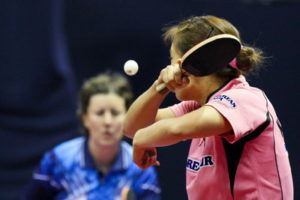 When the sport was first played it was widely referred to as ‘ping-pong’, which was how it was known until Jaques & Son Ltd trademarked the name in 1901. At that point the phrase ping-pong’ came to represent the specific version of the game that was played using the more expensive equipment made by Jaques. Other manufacturers could no longer call it by the same name without paying them money, so the name table tennis was invented as a ready-made replacement.
When the sport was first played it was widely referred to as ‘ping-pong’, which was how it was known until Jaques & Son Ltd trademarked the name in 1901. At that point the phrase ping-pong’ came to represent the specific version of the game that was played using the more expensive equipment made by Jaques. Other manufacturers could no longer call it by the same name without paying them money, so the name table tennis was invented as a ready-made replacement.
Jaques & Sons took full advantage of their new trademark and soon did a similar thing in America. They sold the rights to the name ping-pong to the Parker Brothers, who controlled the name of the sport in the United States as tightly as Jaques did in the United Kingdom. In fact, during the 1920s they enforced the trademark to such an extent that any ping pong associations in the country had to change their name, less they fall foul of said trademark. This included the Ping-Pong Association, which needed to become the Table Tennis Association in 1921.
Early Innovations
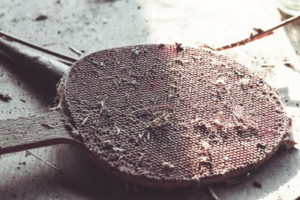 During the sport’s more formative years there were numerous key moments that saw it develop and change into the game that it is today.
During the sport’s more formative years there were numerous key moments that saw it develop and change into the game that it is today.
By 1900 it was already more than just a parlour game, instead developing into a competitive sport that saw people go head-to-head in matches they were desperate to win. These dedicated players constantly sought ways to make the sport more competitive and professional, which is what led enthusiast James W Gibb to discover celluloid balls on a trip to America in 1901. He thought that they would be ideal for the game and took them back home to use in England.
At the same sort of time, another table tennis player named E.C. Goode decided to try to give the bats used in the game a little bit more control when it came to directing the ball. He chose to fix some pimpled rubber to the wooden bats commonly used, thus creating the prototype of the sort of equipment that people are used to using today.
It was an inspired move, coming at a time when the sport’s popularity was growing with every passing year. Books were written on how to play, tournaments began to be organised and in 1902 an unofficial world championship was held, proving that the game’s popularity was unlikely to wane at any point.
Governing Bodies Are Formed
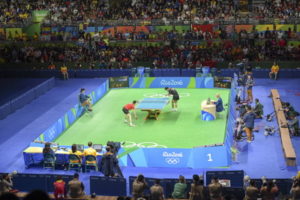 As the desire to play table tennis in a competitive manner grew and grew, so too did the requirement for stricter and more formalised versions of the rules come in to play. This reached its zenith in 1921, with the Table Tennis Association being formed before being renamed as the English Table Tennis Association five years later.
As the desire to play table tennis in a competitive manner grew and grew, so too did the requirement for stricter and more formalised versions of the rules come in to play. This reached its zenith in 1921, with the Table Tennis Association being formed before being renamed as the English Table Tennis Association five years later.
The true scale of the burgeoning sport’s popularity was revealed in 1926 when the International Table Tennis Federation was formed to act as the governing body for all table tennis associations based anywhere in the world.
The founding members of the ITTF were as follows:
- England
- Germany
- Austria
- Czechoslovakia
- Hungary
- Denmark
- India
- Wales
- Sweden
Based in Lausanne in Switzerland, the organisation held its first international tournament in Berlin in the year that it was created.
The First Tournament
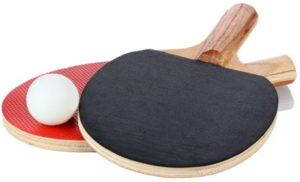 In 1922 the English newspaper The Daily Mirror organised a competition in the more provincial towns of the country, hoping to demonstrate the sport’s popularity outside of the middle-class confines of London. It worked, with more than 40,000 people taking part in the nationwide tournament and proving that there was a desire to play the game competitively.
In 1922 the English newspaper The Daily Mirror organised a competition in the more provincial towns of the country, hoping to demonstrate the sport’s popularity outside of the middle-class confines of London. It worked, with more than 40,000 people taking part in the nationwide tournament and proving that there was a desire to play the game competitively.
The World Table Tennis Championships was held for the first time in December of 1926 under the title of the European Championships and the event took place in London. It boasted five different disciplines:
- Men’s Singles
- Men’s Doubles
- Men’s Team Event
- Women’s Singles
- Mixed Doubles
The Hungarians absolutely dominate the tournament, winning Gold in every discipline and finishing as runners-up in the Men’s Singles, Men’s Doubles and as one half of the Mixed Doubles team. The nation continued to dominate the sport throughout the 1920s and 1930s.
The Sport’s Move Out Of Europe
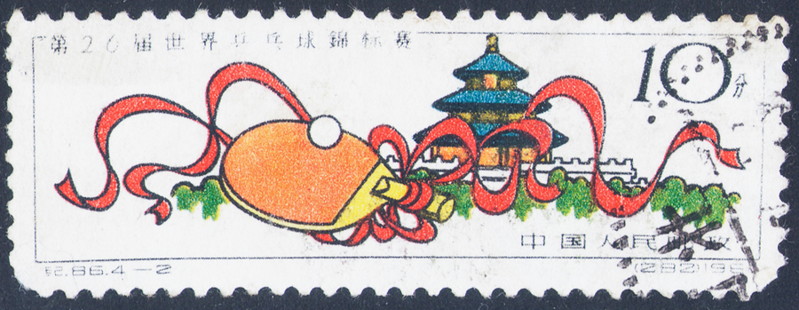
Despite the English army officers often thought of being the ones responsible for creating the game when they lined books up across tables in India before using other books to hit a golf ball backwards and forwards, the game was very much a European invention in its more formative years. Yet it had also been played outside of the continent for some time, such as when a Japanese professor took the game back to his home nation after playing it in England in 1902.
In 1937 Edgar Snow released his account of the Communist Party’s attempts to establish themselves in China, ‘Red Star Over China’. In it he talked of how the guerrilla army had a ‘passion for the English game of table tennis’ during the Chinese Civil War. At the same time, players in the Soviet Union began to lose interest in the game thanks to the country’s desire to see people play more team sports, as well as a theory being espoused that table tennis had adverse health effects for players.
Developing The Bat
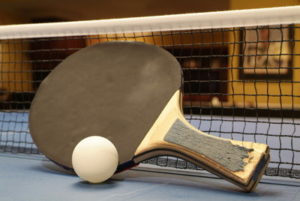 One of the biggest changes to the sport of table tennis came about in the 1950s when the sports goods manufacturer S.W. Hancock Ltd added a sponge layer and rubber sheet to the bats. It turned the game on its head, allowing players to put spin on the ball for the first time in a very real way.
One of the biggest changes to the sport of table tennis came about in the 1950s when the sports goods manufacturer S.W. Hancock Ltd added a sponge layer and rubber sheet to the bats. It turned the game on its head, allowing players to put spin on the ball for the first time in a very real way.
It allowed players to move the ball around the table in a way that simply hadn’t been seen before, leading to the ITTF legislating on the matter in order to add some sort of control over something that was seen as a major development in the sport that gave the players who were quick to learn how to use it a major advantage over others.
The ITTF couldn’t do much about this new development, given that it was seen as adding a new level of excitement and competitiveness to the sport, but what they did do was put rules on the thickness of the sponge and the rubber that could be added to the pads.
Suddenly the game became as much about speed and the ability to add spin to the ball as it did the general play, changing the way the sport worked and shepherding in an era of Asian dominance of the game that has barely abated since. The entrance of China to the World Championships for the first time in 1953 combined with the new sponge bat caused controversy that lasted years.
It wasn’t that spin hadn’t existed before the sponge bats were created, but that was the first time that it could be put onto the ball without the use of the finger. During the 1930s the main way of playing was known as ‘chiseling’ and required the players to essentially push the ball over the net. This meant that the game was slow and ponderous, with some points lasting hours. Finger spin serves became the rage but they were soon deemed to be controversial, with that type of shot outlawed ahead of the 1937-1938 season.
Equipment
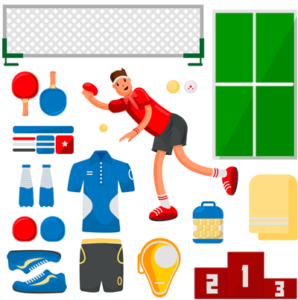 There are three major pieces of equipment used in table tennis: the ball, the bats and the table itself. Balls have boasted a diameter or 40 millimetres since the ITTF increased it from 38 millimetres in the wake of the 2000 Olympics in order to make it a better sport for the spectator, given that the larger ball is slightly slower and therefore easier to watch. Since 2015 they’ve been made of polymer rather than celluloid.
There are three major pieces of equipment used in table tennis: the ball, the bats and the table itself. Balls have boasted a diameter or 40 millimetres since the ITTF increased it from 38 millimetres in the wake of the 2000 Olympics in order to make it a better sport for the spectator, given that the larger ball is slightly slower and therefore easier to watch. Since 2015 they’ve been made of polymer rather than celluloid.
A table tennis table is 9 foot long, 5 foot wide and should stand 2.5 foot from the ground. It is usually blue in colour and has a white line running down its centre, with a net directly in the middle that is 6 inches tall. Whilst you’ll often find concrete and metal tables in public spaces, the IFTT requires them to be made of wood or a wood derivative.
When it comes to the bats, sometimes called paddles or rackets, they are usually made up of seven layers of wood. Cork, carbon fibre, glass fibre and kevlar are all sometimes used in the laters, but the IFTT’s rules dictate that at least 85% of the bat must be made up of natural wood. On average the blade of the bats are 17 centimetres long and 15 centimetres wide. Often one side of the bat will have a surface that can spin the ball and the other side won’t, with international rules dictating that one side must be red and one side black.
Gameplay
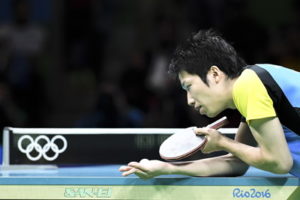 Table tennis used to be played to 21 points, with players needing to be 2 points clear in order to win. Since the rules changed in the wake of the Sydney Olympics, however, that has been changed to 11 points.
Table tennis used to be played to 21 points, with players needing to be 2 points clear in order to win. Since the rules changed in the wake of the Sydney Olympics, however, that has been changed to 11 points.
A point can be one at any time, without the player needing to be serving in order to win one. Serves require the ball to hit the surface on the server’s side once before getting over the net without touching it and without the bat touching the table. Once normal play is underway the ball must hit the table once before it can be returned.
Service alternates between players every 2 points unless the game reaches 10-10, in which case the expedite system comes into play. This is somewhat complex for beginners, but requires the server to win the point before the opponent returns the ball 13 times or else they will be given the point. This system is then in place until the end of the match.
In doubles play, the serve must serve the ball into the box on the opposite side of the table to the one that they’re serving from and players must then alternate who hits the ball each time.
The Major Tournaments
| Tournament | Information |
|---|---|
| Table Tennis At The Olympic Games | Became an Olympic sport for the first time at the Seoul Olympics in 1988 and has remained on the roster ever since. It was hoped that the sport would be seen for the first time at the 1936 Olympic Games in Berlin as a demonstration sport, but in actuality it never appeared as a demonstration sport and was first added as a real one instead |
| Table Tennis World Championships | This is considered to be the most prestigious competition for table tennis players, first taking place in 1926. Since 2000 the competition has been split into two halves, with team events held in even numbered years and singles and doubles matches taking place in odd years |
| European Table Tennis Championships | Inaugurated in Hungary in 1958, the European Table Tennis Championships started life as a biennial event but has been held yearly since 2007. As with the World Championships, team events and individual events take place in different years |
| Table Tennis At The Commonwealth Games | Whilst the Commonwealth Games themselves have been taking place since 1930, table tennis was only added as an official sport in 2002. That is, in part at least, because there’s also a Commonwealth Table Tennis Championships, which began life in 1971 |
Above we’ve looked at the key tournaments that you’ll want to keep an eye out for when it comes to placing your bets.
Given the worldwide popularity of table tennis it is perhaps no surprise to learn that the sport has numerous different competitions run by the various continental governing bodies. Given that there are associations based in more than 200 countries around the world, it’s inevitable that we’ll have to ignore some of them in favour of the bigger tournaments.
